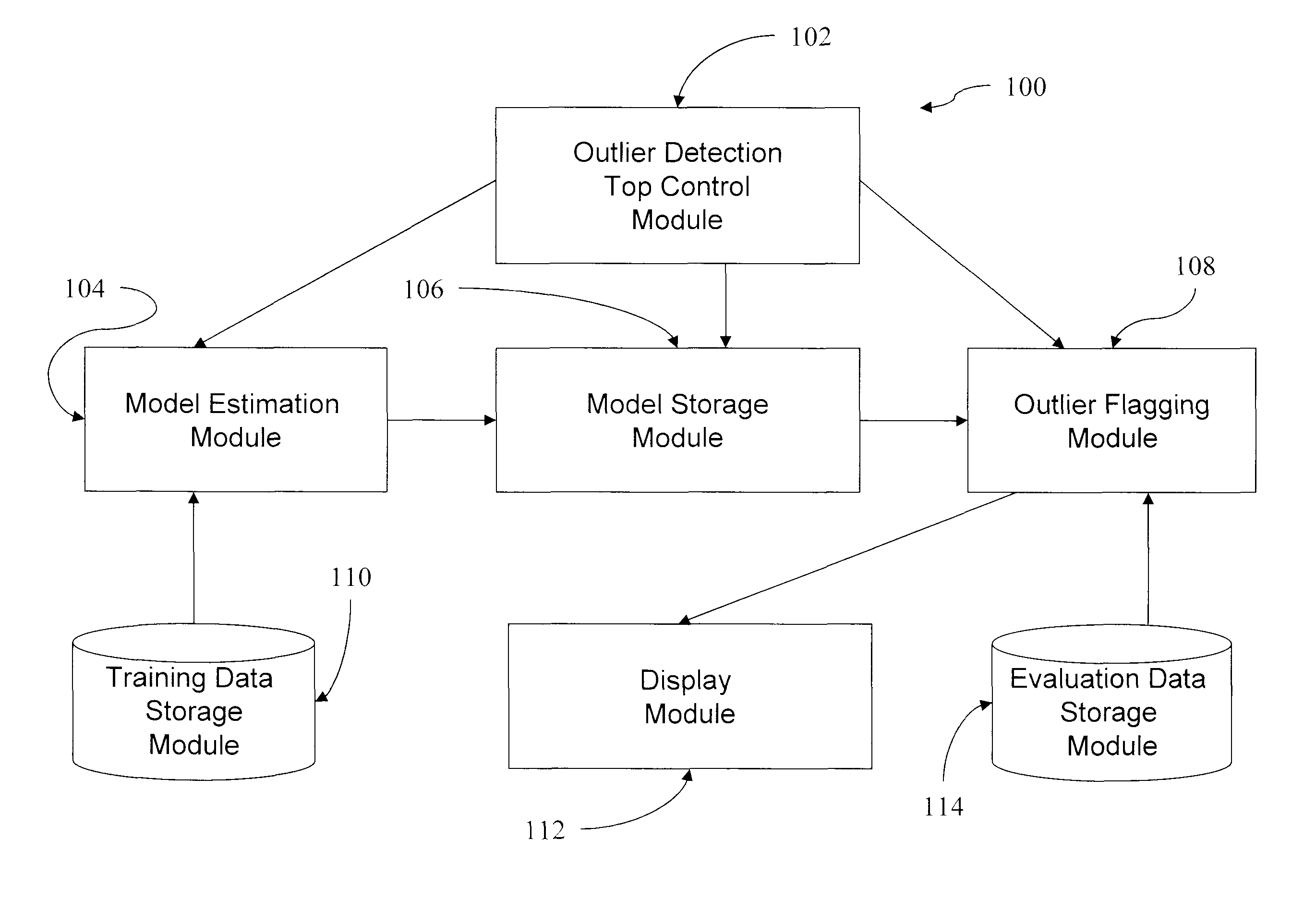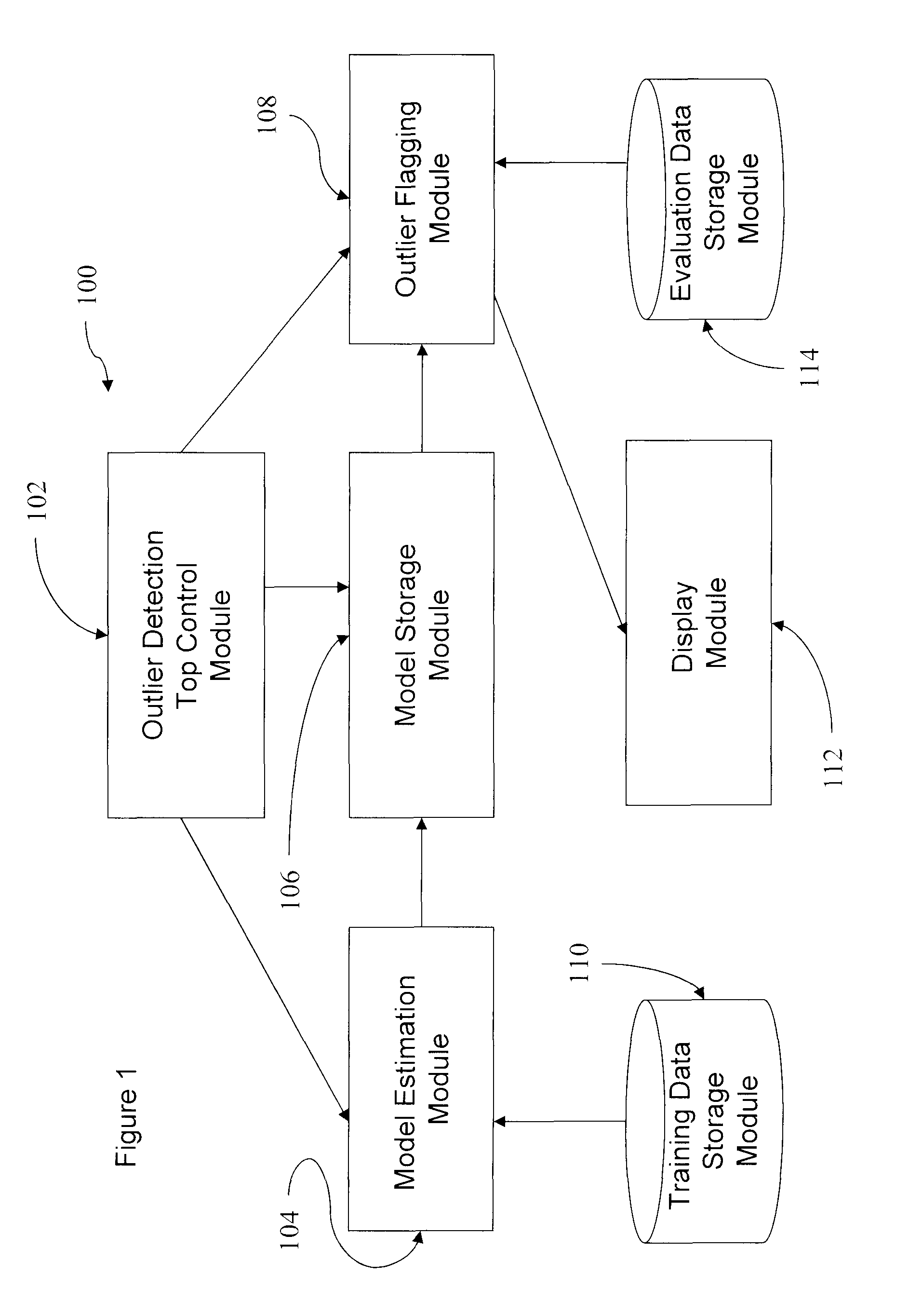Method and system for causal modeling and outlier detection
a causal modeling and outlier detection technology, applied in biological models, process and machine control, instruments, etc., can solve the problems of inapplicability of conventional solutions based on labeled data, insufficient label information for many application domains, scarce labeled data, etc., and achieve rich expressive power.
- Summary
- Abstract
- Description
- Claims
- Application Information
AI Technical Summary
Benefits of technology
Problems solved by technology
Method used
Image
Examples
Embodiment Construction
[0033]Referring now to the drawings, and more particularly to FIGS. 1-10, there are shown exemplary embodiments of the method and structures of the present invention.
[0034]FIG. 1 illustrates an exemplary embodiment of a system 100 in accordance with the present invention. The system 100 includes an outlier detection top control module 102, a model estimation module 104, a model storage module 106, an outlier flagging module 108, a training data storage module 110, a display module 112, and an evaluation data storage module 114. The outlier detection control module 102 controls the entire flow of the modeling and outlier detection process. The model estimation module 104 estimates the reverse Bayesian forest based upon the data stored in the training data storage module 110 in accordance with the method illustrated by, for example, the flowchart 300 in FIGS. 3a and 3b. The model storage module 106 receives the model from the model estimation module 104 and stores the model. The outli...
PUM
 Login to View More
Login to View More Abstract
Description
Claims
Application Information
 Login to View More
Login to View More - R&D
- Intellectual Property
- Life Sciences
- Materials
- Tech Scout
- Unparalleled Data Quality
- Higher Quality Content
- 60% Fewer Hallucinations
Browse by: Latest US Patents, China's latest patents, Technical Efficacy Thesaurus, Application Domain, Technology Topic, Popular Technical Reports.
© 2025 PatSnap. All rights reserved.Legal|Privacy policy|Modern Slavery Act Transparency Statement|Sitemap|About US| Contact US: help@patsnap.com



